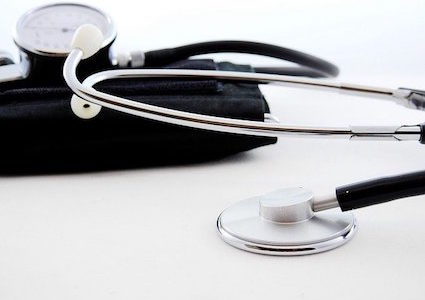Technology plays a big role in health and wellness these days. From online health information to wearable fitness trackers to robotic-assisted surgery and AI cancer diagnosis — technology is there every step of the way. Before consumers get carried away trusting their health and well-being to machines, it’s important to recognize the capabilities and limitations of health technology.
In technology we trust
Health tracking devices, wearable fitness trackers, and health and wellness apps are everywhere. A 2019 Gallup poll found that one in five American adults uses health apps and fitness trackers, and a third of U.S. adults have tried an app or tracker at some point. These tools are great for helping people reach fitness goals, but they can also cause some problems.
People can obsess over their numbers. You hear stories of people waking up in the middle of the night and walking laps in their bedroom because they realize they haven’t met their step count for the day. Orthosomnia is a condition in which people are so preoccupied with the quality of their sleep — and chasing better quality sleep as reported through a wearable device — that it actually interferes with their sleep.
Fitness trackers also create the illusion of being healthy. Meeting 10,000 steps every is great, but it doesn’t actually translate to being healthy. The same goes for getting enough sleep each night. People may avoid going to see the doctor for health problems because of the confidence they have in their self-care.
Another issue is the level of trust people place in fitness trackers and the data that they’re seeing on their smartphones. Much of the data is just a report or measurement of concrete information. You took this many steps today, or you slept this many hours. There’s no reason to doubt this information, and it becomes easy to trust all health information from apps to be accurate and reliable.
Skin cancer? There’s an app for that.
A study from BMJ that evaluated skin skin cancer detection apps found that the applications commonly missed serious skin cancers and gave false positives. In other words, they weren’t good at accurately diagnosing skin cancer. These apps are poorly regulated, and could be really harmful: stress from a false positive, unnecessary biopsies or mole removals, or not taking action when you’re in the early stages of skin cancer.
Even though the apps have disclaimers, the users may not have a firm grasp on the apps capabilities or limitations.
IEEE Spectrum is keeping track of how artificial intelligence stacks up against human doctors. Sometimes AI comes up with the goods. For example, CheXnet — a machine-learning algorithm written by Stanford researchers — bested four radiologists in labeling indicators of pneumonia and avoided more false positives.
However, when it comes to general diagnosis, machines can’t hang with the MDs. A Harvard Medical School study found that online symptom-checking apps got the correct diagnosis 34% of the time; human doctors got it right 72% of the time.
Change how you view technology
Maybe you shouldn’t trust a free smartphone app to tell you whether or not you have cancer.
It’s OK to use these health apps, wearable fitness trackers, and health technology to help you monitor your health, but they’re not perfect. Maybe one day our clothing, wearable devices, or phones can tell us we have high cholesterol, we’re coming down with the flu, or we should schedule an appointment with the doctor to check out some unusual symptoms, but until then, trust your doctor over a digital diagnosis.
We don’t have to view technology as a replacement for humans. We should take advantage of the benefits that technology provides. Experts can use technology to provide better outcomes.
We see this in manufacturing. Factories put machines in place to improve safety, increase efficiency, and maximize productivity. Those who own Indramat systems know this first hand.
Call for repair replacement or support for your Indramat motion control system.



